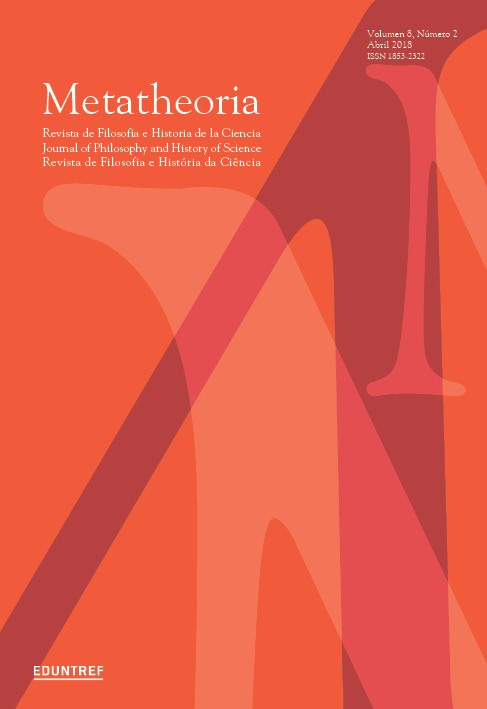Nature, culture and disciplinary architectures. Infrapolitics of an (inevitably) unending debate
DOI:
https://doi.org/10.48160/18532330me8.177Keywords:
nature, culture, philosophy of interdisciplinarityAbstract
In this text I analyze disciplines such as paleoanthropology, bioarcheology and human ecology in which different domains of knowledge intersect, some coming from natural sciences while others from social and human sciences. These disciplines are the hotspots in which the relationships among sciences are negotiated, in which the margins of science are drawn. Hence the relevance of analyzing the dynamics that direct these encounters. Here I argue how this occurs within the boundaries of an architectonical project that aims to connect in a coherent manner these different domains through “hinge sciences” that present themselves as mediators. However, I also show how this act of mediating is inescapably political although here politics always implies the ponderation of competing ontologies supported by infrapolitical dimensions ruled by processes of identification and dis-identification. Finally, I show why, even if the frontiers between the human and the nonhuman are always open to negotiation, we should not lose sight of the fact that our world-constructing capacities are not mere instances of niche construction.
References
Barad, K. (2007), Meeting the Universe Halfway: Quantum Physics and the Entanglement of Matter and Meaning, Durham: Duke University Press.
Derrida, J. (2008), The Animal that Therefore I Am, New York: Fordham University Press.
Foucault, M. (1970), The Order of Things. An Archaeology of the Human Sciences, New York: Random House Inc.
Foucault, M. (1972), The Archaeology of Knowledge, New York: Tavistock Publication Limited.
Giffney, N. y M. Hird (2008), Queering the Non/Human, Burlington: Ashgate Publishing Limited.
Hager, L. (1997), “Sex and Gender in Paleoanthropology”, en Hager,L. (ed.), Women in Human Evolution, Nueva York: Routledge, pp. 1-28.
Haraway, D. (2007), When Species Meet, Minneapolis: University of Minnesota Press.
Heidegger, M. (1962), Being and Time, New York: Harper and Row Publishers, Inc.
Laland, K., Sterelny, K., Odling-Smee, J., Hoppitt, W. y U. Tobias (2011), “Cause and Effect in Biology Revisited: Is Mayr’s Proximate-Ultimate Dichotomy Still Useful?”, Science334: 313-325.
Latour, B. (2002), War of the Worlds: What about Peace?, Chicago: Pickly Paradigm Press.
Latour, B. (2013), An Inquiry into Modes of Existence, Cambridge: Harvard University Press.
Marder, M. (2014), Phenomena-Critique-Logos: The Project of Critical Phenomenology, New York: Rowman & Littlefield International.
Marks, J. (2011), The Alternative Introduction to Biological Anthropology, Oxford: Oxford University Press.
Maynard-Smith, J. y S. Eörs (2000), The Origins of Life. From the Birth of Life to the Origin of Language, Oxford: Oxford University Press.
Odling-Smee, J. y L. Kevin (2011), “Ecological Inheritance and Cultural Inheritance: What are They and How DoThey Differ?”, Biological Theory6: 220-230.
Schiebinger, L. (2004), Nature’s Body. Gender in the Making of Modern Science, New York: Rutgers University Press.
Schultz, E. (2015),“La construcción de nicho y el estudio de los cambios de cultura en antropología: desafíos y perspectivas”, Interdisciplina3(5): 131-160.
Wilson, E.O. (2000), Sociobiology. The New Synthesis, Cambridge, MA: The Belknap Press of Harvard University Press.
Downloads
Published
How to Cite
Issue
Section
License
Copyright (c) 2018 Metatheoria – Journal of Philosophy and History of ScienceThe documents published here are governed by the licensing criteria
Creative Commons Argentina.Atribución - No Comercial - Sin Obra Derivada 2.5 https://creativecommons.org/licenses/by-nc-nd/2.5/ar/





